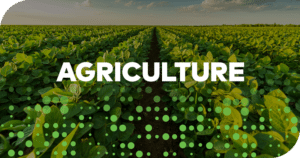Just about every type of weather happened somewhere in the US over the past weekend. Heavy rains, tornadoes, blizzards, flooding, and even a typhoon near Guam caused, and continue to cause automobile accidents, flooded land, destroyed homes, and three fatalities. At 520 PM CST, a confirmed large and extremely dangerous #tornado was located over Columbus, moving
Tag: WeatherOps
Have You Ever Experienced Thundersleet?
On February 5, some lucky people along the Iowa and Illinois border were treated to an unusual winter phenomenon. As an ice storm moved in, not only were they getting sleet, but they also were observing lightning. This type of weather is known as thundersleet. Our view out of the office this evening. It's not
Here’s What Determines the Type of Winter Precipitation That Falls
All precipitation develops in the same way, but in winter there can be quite a variety of types. Freezing rain, sleet, snow, are all possible when it gets cold outside. Freezing Rain Freezing rain forms when the air higher in the atmosphere is above freezing while the ground temp is below 32°F. Warmer air will cause falling snow to
Freezing Rain and Its Effects on Power Lines
Freezing rain occurs when precipitation falls through a warm layer, completely melts, and lands on a surface with temperatures below freezing. All forms of transportation are affected, trees are damaged, and extensive power outages can occur. Power lines can be affected in three ways (or a combination thereof); the weight of the ice, tree branches
Weather Risk: How the Oil and Gas Industry Saves Billions
Most people understand the value that weather forecasts bring to the general public. They tell us whether it will be a good beach day, how much to bundle up at the football game, and if it’s necessary to bring an umbrella to work. However, the benefits of weather information provided to businesses by the private
Sourcing Global Weather Data for Precision Forecasting in the Private Sector
In my previous article, I wrote about the vital partnership between the National Weather Service and private weather companies and how each brings an essential function to the weather enterprise. In this article, I’d like to tell you more about how a private weather company, such as WDT, builds forecasts from a variety of sources
Is the National Weather Service a Competitor to the Private Weather Sector?
There are two questions I’m often asked by friends, acquaintances, and even colleagues in the weather industry: “Is the U.S. National Weather Service a competitor of DTN?” and “What does a private weather company like DTN do?” To the first question, I respond that DTN is not a competitor to the NWS, nor are other
Hurricane Data for GIS Users
With hurricane season once again underway in the Atlantic Basin, we are hoping this season is less active and intense than 2017. Should Mother Nature decide otherwise, WeatherOps is prepared to help and assist. For GIS analysts and developers with assets that could be threatened by a tropical activity, WeatherOps has multiple data streams available
What Are Upper Air Maps and How Are They Used?
The location of troughs and ridges can play an essential role in a region’s weather. Weather observations above the ground are collected by weather balloons. Data from one a single site are plotted on a sounding, but an upper air chart can show information from multiple observation sites. Most upper air charts are plotted in
How Do Mountains Affect Precipitation?
In basic terms, the two things needed for precipitation are moisture and lift. Temperature profiles and landmasses can also affect how much rain a region gets. Mountains can have a significant effect on rainfall. When air reaches the mountains, it is forced to rise over this barrier. As the air moves up the windward side of










 Comprehensive weather insights help safeguard your operations and drive confident decisions to make everyday mining operations as safe and efficient as possible.
Comprehensive weather insights help safeguard your operations and drive confident decisions to make everyday mining operations as safe and efficient as possible.